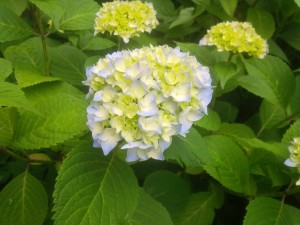 In my part of the world we have not had substantial, soaking rain for nearly a week. It is now officially high summer, with the kind of pervasive hot weather that makes and lawns and gardens extra thirsty. Those fortunate pieces of earth watered by in-ground irrigation systems are much less parched, but even they have corners that the water doesn’t quite reach. If you listen closely, the plants in those corners are adding their cries to the chorus emanating from non-irrigated spaces.
In my part of the world we have not had substantial, soaking rain for nearly a week. It is now officially high summer, with the kind of pervasive hot weather that makes and lawns and gardens extra thirsty. Those fortunate pieces of earth watered by in-ground irrigation systems are much less parched, but even they have corners that the water doesn’t quite reach. If you listen closely, the plants in those corners are adding their cries to the chorus emanating from non-irrigated spaces.
Clearly if you are lucky enough to have in-ground irrigation, the first thing you should do is look to those neglected corners and hand water as necessary. Then you can relax as the rest of us do combat with the effects of summer weather.
Intense weather, including dryness, requires garden triage—doing what is most necessary first and prioritizing other jobs.
Many of us grow plants in containers, either on terraces, decks, window boxes, or as part of the display in beds and borders. Frequently those containers are filled with colorful annuals, which are some of the thirstiest plants around. In hot summer weather, containers need daily watering. If they are positioned so that they will soak up rain when it comes, you can skip the job on rainy days. You can water by hand, by hose, or, if you have an extensive, closely grouped container array, by way of a drip irrigation system that connects all the containers.
If you water by hand, keep a full watering can beside the door closest to your containers. I fill up cans whenever I am doing something in the kitchen, so that when I have a few minutes during the day I can water some of the containers. This makes the task feel less onerous and the gardener feel more virtuous—a multi-tasking win-win.
In-ground plants have varying needs, so while you are in triage mode—and after you have finished watering your containers—look to the water lovers for signs of seasonal stress. Ferns, especially those that receive even a bit of direct sun during the day, tend to languish, dropping their fronds and subsiding into crispy critter territory. All of those multi-colored heuchera that landscapers use with wild abandon in light to medium shade, will appreciate some extra water. Ligularia will also fold up its leaves and go dormant or die with insufficient moisture. Check on hydrangeas. Everyone has them now, thanks to breeders who have gone into overdrive creating varieties that are larger, smaller, repeat-flowering, strangely colored, or otherwise different from the good old mophead types. The one thing they all have in common is water-loving dispositions. Hydrangeas are among the most pathetic specimens when even slightly water-deprived, with limp leaves and brittle, desiccated flowerheads.
Extra mulch will help all of the above plants to flourish, but don’t allow the aroma of all that fresh organic material go to your head. Supplemental water will still be needed in hot, dry weather.
If you have followed the current fashion and littered your cultivated areas with sedums and similar succulent plants, breathe a sigh of relief and pour yourself a celebratory glass of iced tea. Well-established succulents generally get through drought with little fuss. The water that you did not pour on your sedums can go to your roses and daylilies, both of which are much more likely to thrive and rebloom—for varieties bred to do so–if they get regular hydration.
While you are watering, don’t forget to feed the hungry. This is especially true of those lovely petunias, geraniums, and other annuals that produce nearly continuous bloom throughout the growing season. If you use water-soluble plant food, you can water and feed at the same time, another multi-tasking triumph that will lead to a more floriferous garden. Roses can also use a good feed about now, either with rose-specific food or a general purpose product.
Hand watering also gives you a good chance to check for bugs. If you have a hose with a sprayer attachment handy, use it to blast aphids, Japanese beetles or other marauders off your plants. Squish all the spotted lanternflies that you can find, if they have infested your area. You will be doing yourself and your neighbors a favor.
Do the necessary garden triage work whenever you have the time. I often use the cooler evening hours to tend to my garden’s needs. The guidebooks advise watering in the early morning, and that is the best way. However, thirsty plants will appreciate the moisture whenever they get it. Remember that a rainy day will come eventually, and you will be perfectly justified in ignoring your plants on that day and relaxing in a cool dry place.
